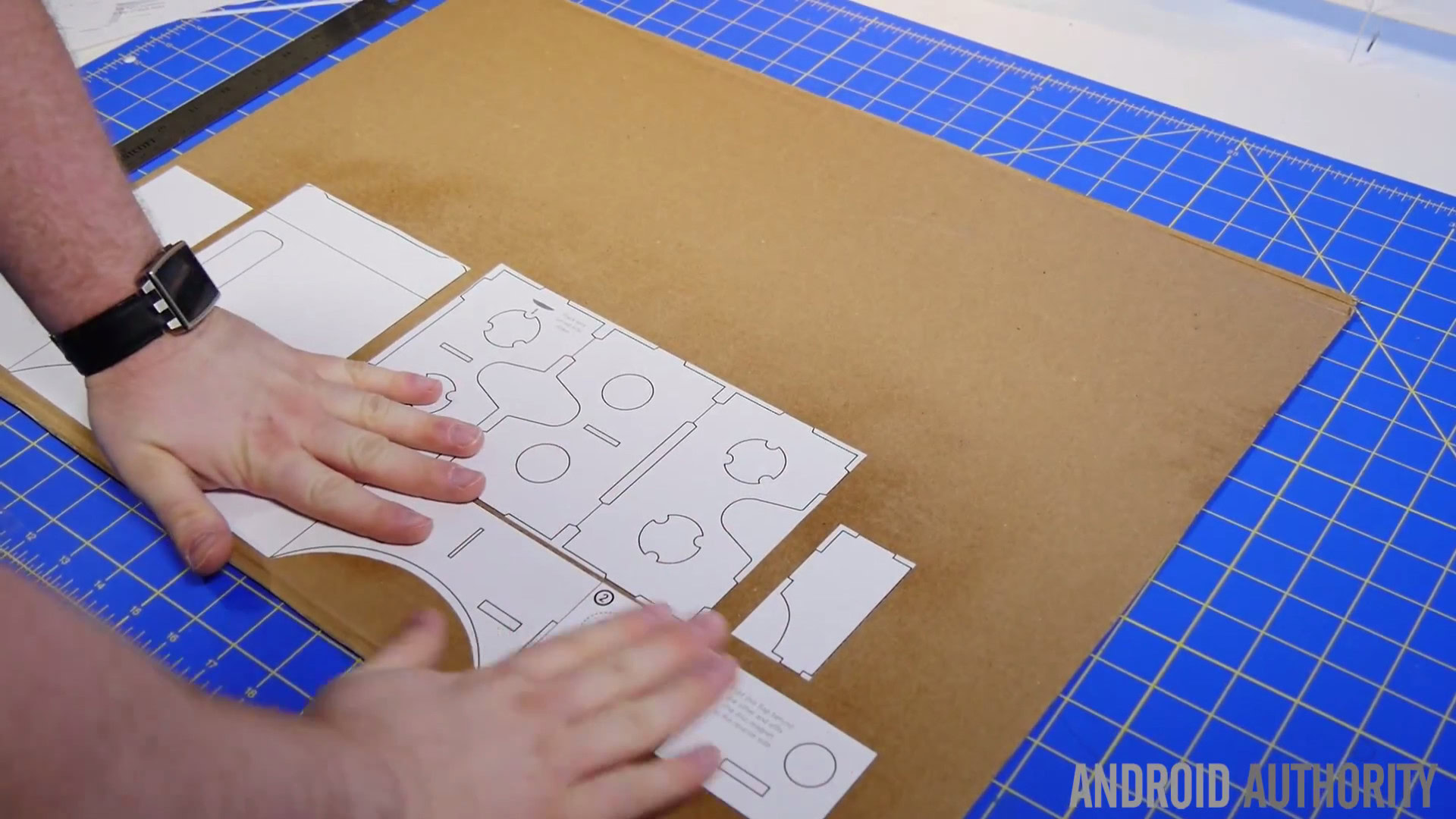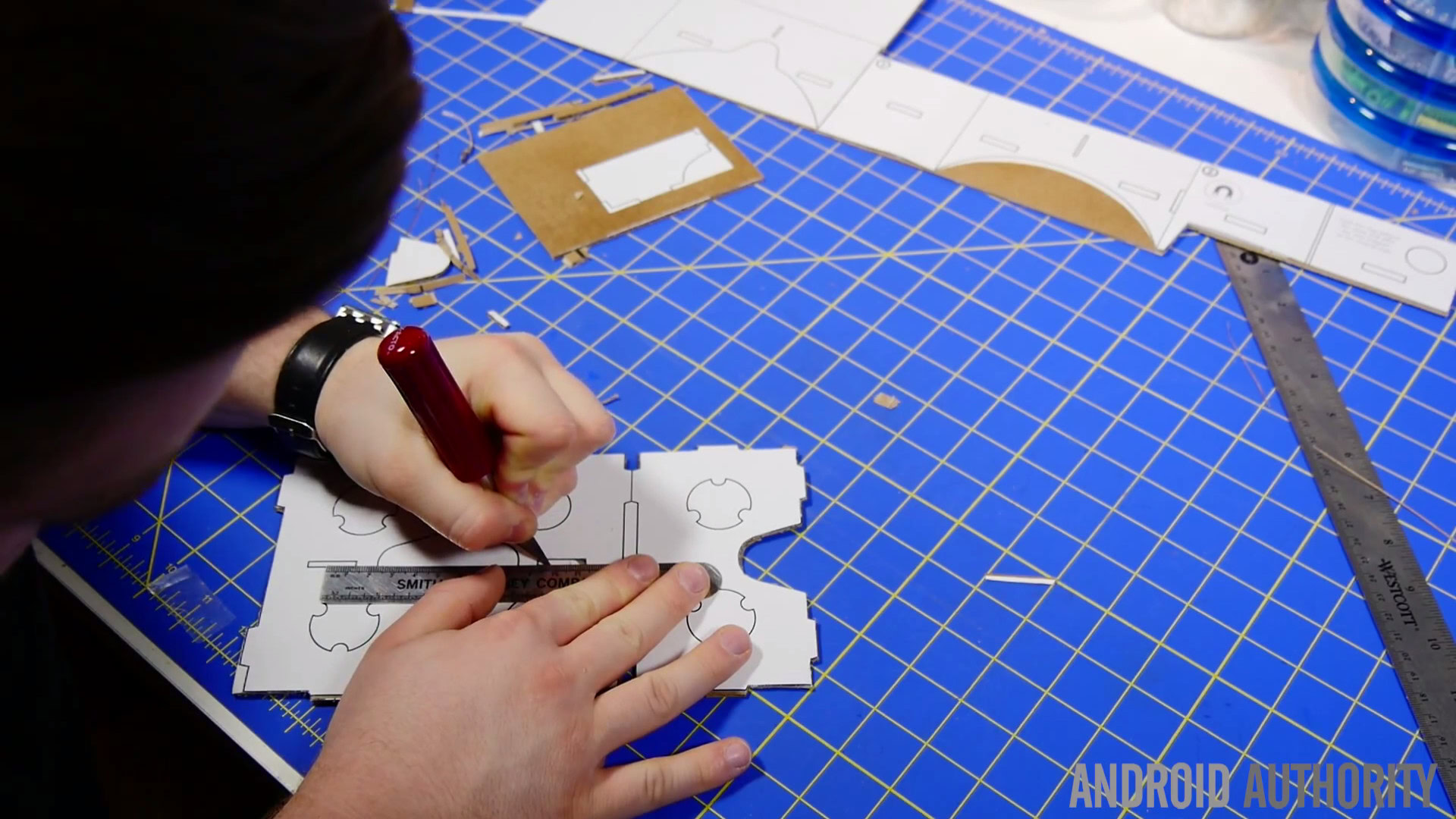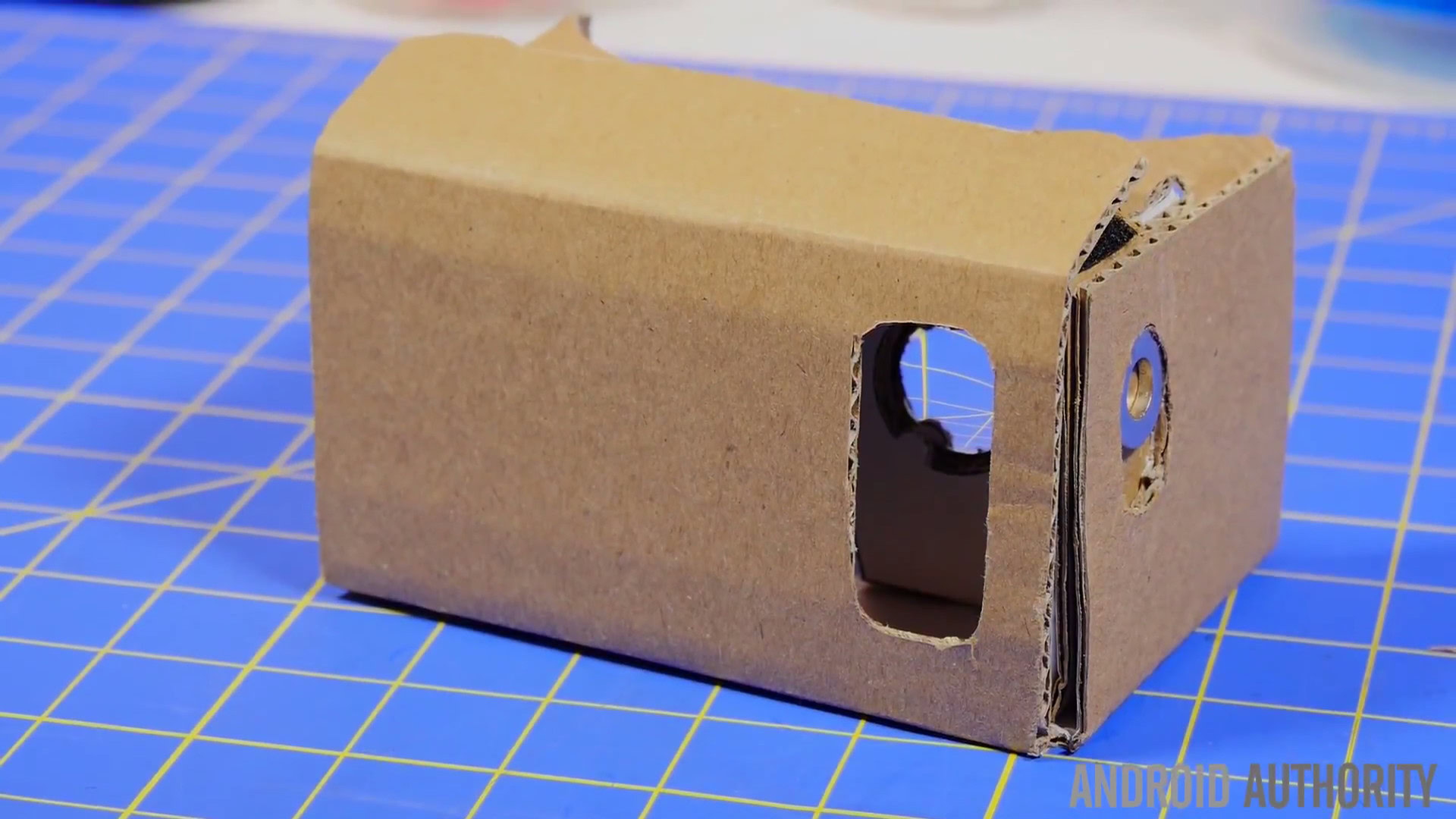Affiliate links on Android Authority may earn us a commission. Learn more.
How to make your own Google Cardboard headset
Ever since the launch of Google Cardboard back in 2014, virtual reality has slowly been making its way to the masses. Not only are more and more manufacturers producing higher-end headsets such as the Samsung Gear VR and the Oculus Rift, there are also a slew of super affordable options available for those who are looking to try VR for the first time. Perhaps most interestingly, Google has published a set of easy-to-follow instructions online that will help you build your own DIY Google Cardboard headset for a very small price.
Today we’re going to walk you through that process, and show you exactly how to build your very own Cardboard headset.
Here’s what you’ll need
Required:
- A piece of cardboard at least 22” (55.88cm) by 8.75” (22.23cm)
- Two 2” (5.08cm) strips of 3/4” (1.91cm) wide Velcro
- One 3/4” (1.91cm) neodymium ring magnet
- One 3/4” ceramic disk magnet
- Two Biconvex lenses (45mm focal length)
Optional:
- Rubber band
- An NFC tag
Additionally, the only tools you will need for this project are an X-ACTO knife, a straight edge, Scotch tape, some spray adhesive or contact cement, and you may also find that some super glue will come in handy.
Instructions
Begin by downloading the manufacturers kit from Google. Once you extract the .zip file, open the scissor-cut template and proceed to print the three pages.
Use a straight edge to trim away any excess paper from the templates, and use tape or glue to connect the three pieces of the main body template together. Align the corresponding numbers over one another with the light numbers on top. In all, there will be three templates – the body, the lens holder and the lens divider.

Next, trim away any extra cardboard you may have. Once all the excess is cut away, lightly coat the cardboard with spray adhesive and let it sit for three to five minutes. Press the three separate templates into place, and you’re ready for the next step.
So far it’s been pretty easy, right? Well, unfortunately, here’s where you’ll have to put in a little bit of work. The next step is cutting out every little nib with an X-ACTO knife, which can get pretty tiresome after awhile. I began this process by trimming away all the unnecessary outside pieces and worked my way in from there. For all of the tight corners and smaller pieces, I found it much easier to just perforate the cardboard by stabbing it repeatedly, rather than trying to drag and cut. Dragging your knife through the cardboard might end in you cutting off more than you need.

During this part of the process your hand might cramp up a time or two, but just remember – be patient! Making all of these cuts will likely take you around 30 to 45 minutes in all, so be prepared when it comes to this step. We’d recommend cutting out all of the round pieces last, as these are the most intricate.
Once you’re done cutting everything out, it’s now time to begin assembling.
First, insert the lenses into the two eye holes, and make sure you pay attention to their orientation. The paper template will tell you which direction the lenses should face. Proceed by folding the top third of the lens holder template down and the lower third up, so that the middle panel is sandwiched between the two and the lenses can’t fall out. Then use a straight edge to help make straight and sharp folks on all of the lighter colored lines on the template. Place the ceramic magnet in its designated spot with the neodymium magnet on the opposite side (I ended up gluing mine, though it’s not required), and start folding. Insert the lens holder with the divider, then wrap the cardboard frame around it, lining up all the proper slots and grooves.

I added a touch of super glue to the inside of the left-most panel and glued the headset shut. Next, add the Velcro strips to the top of the flap where you’ll later insert your phone. Here’s where you have the option to add an NFC tag to your Cardboard. You can program it by downloading Trigger from the Google Play Store and creating an action which will launch the Cardboard app.
Once your Cardboard headset is set up, download the Cardboard app from Google Play, launch it, then insert your phone into the headset. You can now experience VR at will!
If you have any questions, feel free to leave a comment below. Have you made your own Google Cardboard headset? If so, how did it turn out?